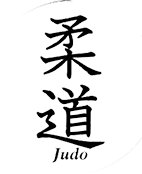NBK wrote:Very much like aikido, and many more techniques, I bet, than you're likely to find in historic Chin Na (but not my field). In fact I feel certain, without evidence or feeling the need to seek evidence, there's a lot of aikido influence in this set. There's always bleedover from other arts; I stopped looking as it become obvious to me that all arts borrow from each other. And the influence of Japan throughout Asia and as a center of commerce and education in Asia for the last 100 years means that a lot of people learned a lot of Japanese martial arts and took them home.medo wrote:
Talking wrist locks
https://www.youtube.com/watch?t=105&v=Etvn0wmBkaU
any relation to Aikido?
I feel that a competitive at a reasonable standard Judoka would have developed grip and forearm strength far greater than the average Aikido practitioner unless the Judoka does a full beginners lung at the Aikidoka unlikely wrist locks would be effective the Judoka would just snatch his wrist back.
But with decent aikido you'd have more emphasis on a decent taisabki / body posture/movement than the Chin Na master. I'll teach a number of these same techniques today in Nihon Jûjutsu, but will correct anyone who moves so out of balance as this gent. (With the exception of the finger locks - my sensei had little regard for them.) www.nihonjujutsu.com is a form of pre-war aikibudô taught by Ueshiba Morihei sensei and Tomiki Kenji sensei, and correct body movement was core to the art.
Certainly the average, well-trained judoka (a contradiction in terms?) has well developed grip and balance. If some block of a guy like Billc grabs me, subtle movement doesn't get his wrist into the proper position to manipulate. But if I can start the wrist motion, Billc, like most judoka, doesn't have much flexibility in his wrist (from long years of that training), and if you can get past that initial resistance, wrist techniques can be very effective.
But Billc, utilizing the subtlety of judo (which is, after all, the topic of the OP), will adjust slightly when I make a wrist attack. He'll drop his center of gravity slightly, tuck his elbow just so, while being careful not to lose his balance, and shrug off a subtle wrist attack. So, I'll be forced to use a much larger motion against him than against the largely compliant, out of balance opponent uke in the video above. Maybe the primary attack will fail but the act of resistance gives another opening - that's aiki.
Most well trained judoka are not affected by low level aikidoka techniques, and often neither knows why. Tomiki sensei himself thought that no one should study aikido before ten years of good judo training, to establish correct posture and taisabaki.
NBK
Thats probably why my adventures with Aikidoka have left me with negative experiences, only met social club "I grade myself" dan grades that have not done 10yrs in Judo



